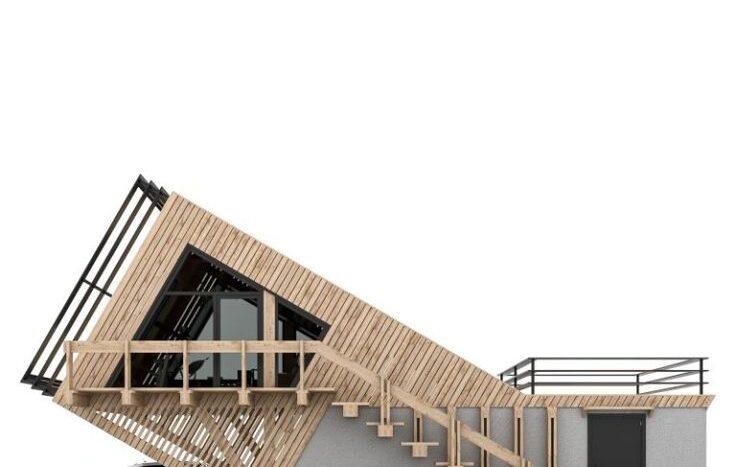In the ever-evolving world of design, certain individuals and movements have left an indelible mark on the landscape of aesthetics. These modern and contemporary design icons have not only shaped the way we perceive and interact with our surroundings but have also inspired generations of designers and artists. In this article, we’ll delve into the lives and contributions of these pioneers who have redefined the concept of beauty and functionality in design.
Table of Contents
- Introduction: The Essence of Modern and Contemporary Design
- The Bauhaus Movement: A Revolution in Form and Function
- Le Corbusier: The Master of Modern Architecture
- Charles and Ray Eames: The Creative Duo
- Eileen Gray: The Queen of Art Deco
- Frank Lloyd Wright: Organic Architecture Visionary
- Philippe Starck: A Contemporary Design Maverick
- Zaha Hadid: The Queen of Curves
- Dieter Rams: Less is More Philosophy
- The Influence of Scandinavian Design
- Minimalism: Stripping Down to Essentials
- Postmodernism: A Playful Reinterpretation
- The Digital Age: Design in the 21st Century
- Sustainability and Eco-Friendly Design
- Conclusion: Shaping the Future of Aesthetics
1. Introduction: The Essence of Modern and Contemporary Design
Modern and contemporary design is more than just a visually pleasing arrangement of objects. It’s a reflection of the times, a fusion of art and functionality. This article explores the lives and legacies of individuals who have transcended their eras to become true design icons.
2. The Bauhaus Movement: A Revolution in Form and Function

The Bauhaus movement, founded by Walter Gropius, revolutionized design education and practice. It championed the idea that form should follow function, leading to minimalist and geometric design principles.
3. Le Corbusier: The Master of Modern Architecture

Le Corbusier, a pioneer of modern architecture, introduced the world to sleek, functional buildings that emphasized open spaces and the use of materials like concrete and glass.
4. Charles and Ray Eames: The Creative Duo

The Eames couple brought innovation to furniture design. Their iconic chairs remain staples of modern interiors, blending comfort, elegance, and functionality.
5. Eileen Gray: The Queen of Art Deco

Eileen Gray, with her art deco creations, left an indelible mark on design. Her iconic “E-1027” table is a testament to her innovative vision.
6. Frank Lloyd Wright: Organic Architecture Visionary

Frank Lloyd Wright’s organic architecture harmoniously integrated nature and design. His Fallingwater house is a prime example of this philosophy.
7. Philippe Starck: A Contemporary Design Maverick

Philippe Starck, known for his playful and imaginative designs, has redefined contemporary interiors with his eclectic creations.
8. Zaha Hadid: The Queen of Curves

Zaha Hadid shattered architectural norms with her fluid and futuristic designs. Her structures challenge traditional perceptions of space and form.
9. Dieter Rams: Less is More Philosophy

Dieter Rams’ “less is more” approach to product design has influenced generations. His principles of simplicity and functionality continue to inspire.
10. The Influence of Scandinavian Design

Scandinavian design, characterized by minimalism, functionality, and nature-inspired aesthetics, has gained global recognition and adoration.
11. Minimalism: Stripping Down to Essentials

Minimalism, as a design movement, promotes simplicity and the elimination of excess. It has permeated various aspects of modern life.
12. Postmodernism: A Playful Reinterpretation

Postmodernism challenges traditional design norms with irony, eclecticism, and a playful approach to aesthetics.
13. The Digital Age: Design in the 21st Century

In the digital age, designers incorporate technology, interactivity, and sustainability into their creations, redefining the boundaries of design.
14. Sustainability and Eco-Friendly Design

As the world becomes more eco-conscious, designers are embracing sustainability, creating products and structures that minimize environmental impact.
15. Conclusion: Shaping the Future of Aesthetics
The legacy of these modern and contemporary design icons continues to shape the way we perceive and interact with the world. Their innovations serve as a foundation for future designers, ensuring that aesthetics and functionality remain at the forefront of design.
5 Unique FAQs
- Who were the key figures in the Bauhaus movement?
- Walter Gropius, Ludwig Mies van der Rohe, and Wassily Kandinsky were some of the prominent figures associated with the Bauhaus movement.
- What is the significance of the Eames couple in design history?
- Charles and Ray Eames revolutionized furniture design by combining aesthetics and comfort in their iconic chairs.
- How did Eileen Gray contribute to the art deco movement?
- Eileen Gray’s innovative art deco creations, such as the “E-1027” table, showcased her unique design vision.
- What is organic architecture, as advocated by Frank Lloyd Wright?
- Organic architecture, as envisioned by Frank Lloyd Wright, seeks to harmonize design with the natural world, emphasizing open spaces and integration with the environment.
- How has the digital age influenced contemporary design?
- The digital age has brought technology, interactivity, and sustainability into contemporary design, expanding the possibilities of creativity in the 21st century.
Access Now: https://bit.ly/J_Umma
In conclusion, the world of modern and contemporary design is a dynamic and ever-evolving realm, thanks to the visionary contributions of these design icons. Their ability to combine form and function, innovate with materials, and push the boundaries of aesthetics continues to inspire and shape the aesthetics of our everyday lives. As we move forward, their legacies serve as guiding lights for designers and enthusiasts alike, ensuring that the pursuit of beauty and functionality remains at the heart of design.
- Your FUN88 Official India app - June 28, 2024
- DafaBet page for gamers in India - June 24, 2024
- Слотор Сайт – Рискни и выиграй - June 15, 2024














